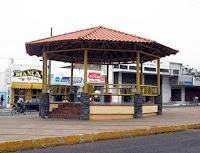You are here
Operational optimisation program

- Localization:5 towns in the State of Mato Grosso do Sul in Brazil
- Contract type:
- Funder:World Bank
- Contract duration:4 years
Summary
The fundamental objectives of the Operational Development Program (ODP) were:
- Increasing invoicing and debt recovery
- Reducing the operational costs in the short and long-term
The ODP was put in place in Campo Grande (660,000 inhabitants), Dourados (150,000 inhabitants), Corumba/Ladario (115,000 inhabitants), Ponta Porã (50,000 inhabitants) and Três Lagoas (80,000 inhabitants).
Description:
The specific objectives of the ODP
- Determining and quantifying the unaccounted for water and making proposals for reducing it by means of a strategy based on a cost/benefit analysis
- Assessing the organisational structure of SANESUL and making proposals for corrective measures where necessary.
- Defining of a management control system for the supervision and monitoring of water distribution systems.
- Proposing standards and recommendations for management in the operational and commercial sectors in order to improve customer service.
- Implementing a training program for the technical managers of SANESUL for effective and rapid transfer of technology.
The 5 phases of the project
Phase 1: Diagnosis
1A: "Non-Revenue Water" diagnosis
1B: Structural and organisational diagnosis
Phase 2: Development of an Action Plan for the reduction of losses in pilot zones
- Appropriateness of macro-metering
- Analysis of customers with meters
- Survey of users and connections
- Leak detection campaign
- Field survey on the influence of the metering index
- Survey on the variation in the number of meters installed
- Survey on the zones that have no water and on the repercussions for the loss index
- Survey on large consumers
- Survey on connections considered as inactive or disconnected for non-payment
- Additional survey on large consumers
Phase 3: Implementation of the Action Plan in pilot sites
- Developpement and management of a database relating to loss monitoring
- Appropriateness of macro metering and analysis of the pilot sites
- Visible and invisible leak detection and repair campaign
- Updating of the subscriber database
- Preliminary action to improve operational management
- Optimisation of customer management
- Cost/benefit studies of the actions that have been implemented
- Operation and maintenance manual for the pilot sites
- Assessment of results
Phase 4: Two years Action Plan, based on the results of pilot actions
- Metering improvement plan
- Preliminary sectorisation and operational improvement tasks
- Setting up of a telemetry system
- Field survey on connections and users
- Survey and visible and invisible leak repair
- Additional analyses and final definition of corrective actions
- Organisation of SANESUL
- Structuring of the company's databases and information system for the monitoring and production of non-revenue water
- Definition of an action plan for 2 years
Phase 5: Implementation of a two-year Action Plan
- Training and assessment for the setting up of the macro metering system
- Training and assessment for the setting up of the telemetry system
- Training and assessment for the operation of the information system
- Development of procedure manuals for the five systems in the project
- Technical assistance for the implementation and monitoring of the Action Plan
